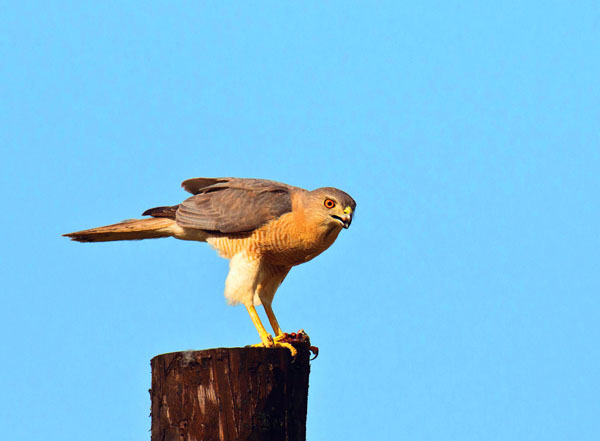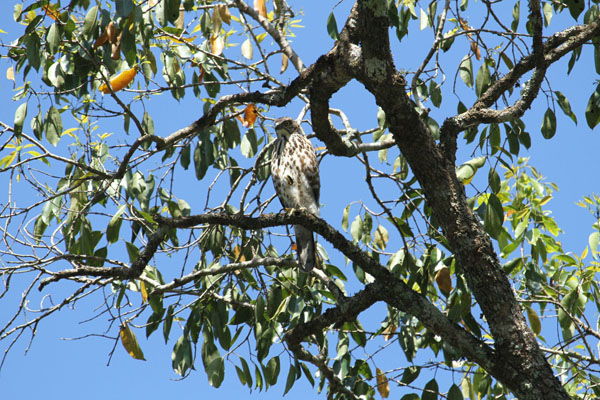Accipiter badius
IUCN
LCBasic Information
Scientific classification
- name:Accipiter badius
- Scientific Name:Brown-eared goshawk, Brown-eared sparrowhawk
- Outline:Raptor
- Family:Accipitriformes Accipitridae Accipiter
Vital signs
- length:217-325g
- Weight:210-440mm
- lifetime:10-20year
Feature
Sharp vision
Distribution and Habitat
In my country, it is distributed in western Xinjiang, Yunnan, Guizhou, Guangxi, Guangdong, Hainan Island, and Fujian. Abroad, it is distributed in Africa, southeastern Europe, West Asia, the Indian subcontinent, Sri Lanka, and Indochina.
It has strong adaptability and lives in mountains, hills, grasslands, arid plains, and near lakes. It often hovers alone at the edge of the forest and in open areas, gently flapping its wings.
Appearance
Small raptor. The female is significantly larger than the male.
Five wing fingers are visible when this species is flying. The plumage of male and female is similar. The male has a dark iris, a mouse-gray back, a gray throat midline, and light red horizontal stripes on the chest and abdomen. The lower abdomen is whitish, and the wing fingers are black when flying. The female is similar to the male, but the iris is light yellow, the wing fingers are not black but have horizontal stripes, and the brown horizontal stripes on the chest and abdomen are relatively thick.
The juvenile bird has a light iris, vertical stripes on the chest, horizontal stripes on the flanks, and dotted spots on the abdomen. It is similar to the sub-adult bird of the sparrowhawk, but the throat midline is not as thick as the latter, and the tail feathers are narrower than the latter. When the species is in the perched state, it can be observed that the legs are thin and long, and the wing tips reach
Details
The brown-eared hawk is much smaller than the goshawk. It often hovers in the open areas outside the forest area and on the plains, and sometimes gently flaps its wings. It has sharp vision. Once it finds prey in the forest or on the ground in the air, it will pounce at the speed of an arrow, grab the prey with its claws and take off again, tearing it apart in a secluded place. Its food mainly consists of small birds, frogs, lizards, rodents, large insects and other animal food. But it rarely chases flying forest birds.

The breeding season is from May to July. It nests in trees in the forest, 5-14 meters above the ground. The nest is usually placed on a branch near the trunk. It often builds nests on medium-sized broad-leaved or coniferous trees such as lindens, red pine trees or larch trees, and sometimes uses the nests of magpies and crows. The structure of the nest is extremely rough, mainly made of dead branches of trees. The inner pad is made of leaves and twigs.

Each nest usually lays 3-4 eggs, occasionally as few as 2 and as many as 7, usually 1 egg is laid every 1 day. The eggs are oval or nearly round, the color of the eggs is blue-white, smooth and spotless, the size is 29.8 mm × 38.6 mm, and the weight is 17-18 grams. The female bird is responsible for incubating the eggs, and the incubation period is 33-35 days, and the brooding period is about 30 days. The chicks are late-maturing, and after 24-30 days of nesting, the chicks are able to fly and leave the nest.
Listed in the second level of the "List of National Key Protected Wildlife in China".








